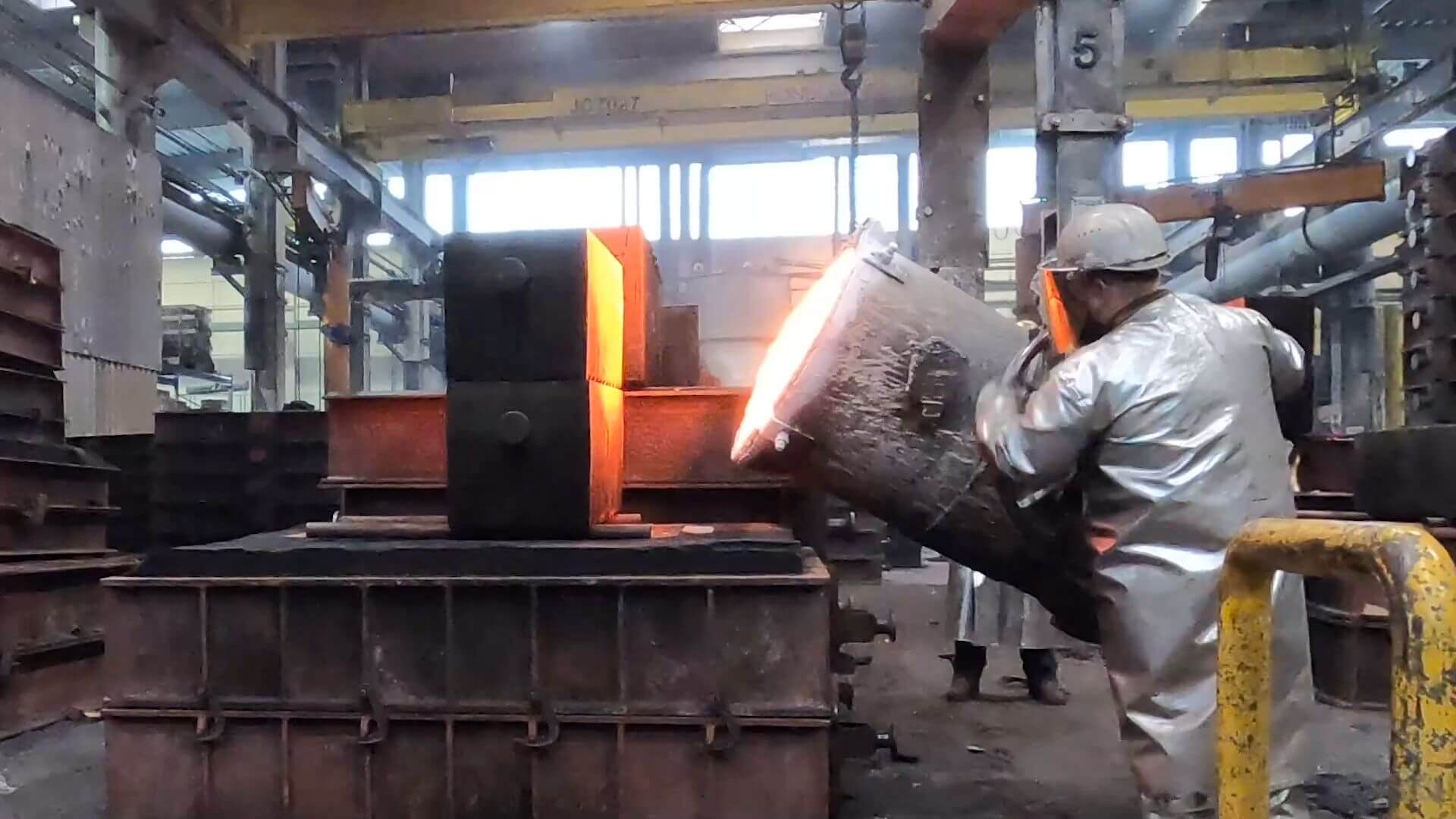Grey cast iron components from our in-house iron foundry are installed in every Behringer band saw. These have a vibration-damping effect directly at the cutting edge and thus increase the tool life. We have high quality standards for the castings we use, which is why we cast them ourselves, and there is also a standardised and certified quality control during the entire production process.
The working process starts with the model plate and the moulding box, which is filled with a moulding material. As soon as the moulding material has hardened, the moulding box can be lifted off the model plate and taken to the sizing unit. The coating serves as a separating material between the moulding material and the molten iron. In order to be able to reproduce specific outer contours or cavities during casting, cores are inserted into the moulding box.
A wide variety of raw materials are charged together for the melt. The molten iron is then transported to the moulding box with the pouring ladle and the mould is poured. Once the casting has solidified, the moulding box can be opened and emptied. Then, during fettling, the gates and risers are removed and all edges are deburred.
